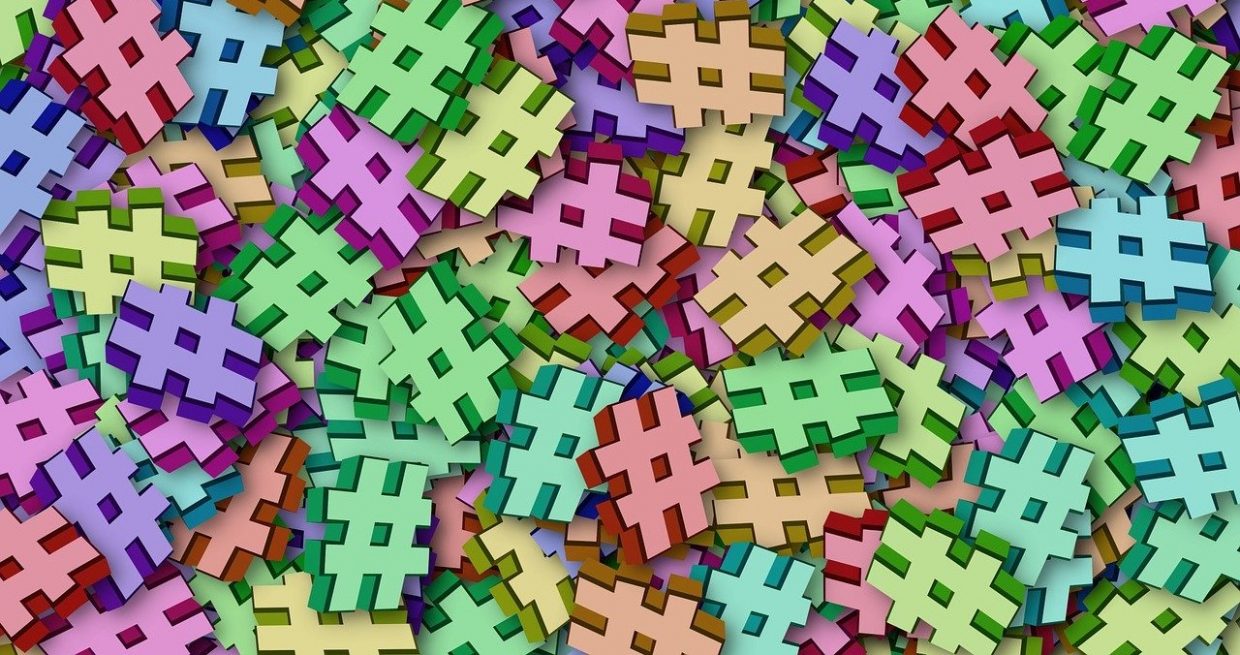
Image: Pete Linforth on Pixabay
Hashtags. They’re everywhere, like rabbits that reproduced with abandon and hopped from Twitter (where they originated in 2007) to LinkedIn, Facebook, Pinterest, YouTube and Instagram (forgive me if I overlooked a hashtag-laden social network).
Hashtags help group topics and trends for social media users and make content searchable. Marketers can use them to create brand awareness and connect with their consumers by topic—whether product-driven, about a social cause, or promoting an event. And some of us can’t resist using them to add the right element of snark to our Facebook posts.
FUN FACT: Did you know that the pound sign is also called an “octothorpe?”
Hashtags on various social media platforms
Hashtags add context to posts, help increase “findability” (is that a word?), and boost engagement, especially when you use popular hashtags specific to the platform. Since people follow hashtags as well as accounts, I often look up trending and popular hashtags related to the content (use the search bars on the platforms).
Broad terms (#travel, #books, #food) are less likely to get engagement than their more targeted relatives (#Europeanrailtravel, #childrensbooks, #Indianfood). It’s best to keep hashtags succinct and relevant to the post content. Make them easy to read and decipher (there are some hilarious hashtags-gone-wrong out there; some are here). Use terms people are searching. And don’t overuse them. My personal/professional opinion—too many make the post look spammy and feel like the kid in the back of the classroom who can’t get the teacher’s attention. In Instagram (more below), I often gloss over captions with more than ten tags but given the tag limit there, it appears many other people are unfazed.
Is there an optimal number of hashtags to use?
Good question. The answer: yes and no. Well, it depends.
- Twitter: There’s little room in those 280-character tweets so don’t overload the post with tags; two or three will help users find your tweets based on topics they’re following. Hashtags can be used in comments when you retweet or respond.
- Facebook: I think three max is best. You can place these anywhere in the post but the #s might break up the copy too much so play around with it. In many cases, hashtags after the copy is cleaner. They can be used in comments as well.
- LinkedIn: Same guidelines here; three to five hashtags are more than ample. Make them relevant to the content or your company and keep them brief (the platform will generate a list of suggestions).
- Pinterest: Two to five probably do the trick for your descriptions or repins but Pinteresters can use up to 20 hashtags. Be specific and descriptive.
- YouTube: Like the others, two or three hashtags help users find your content, although you can go higher. However, beware the spammy nature of using too many (like 15 or more). Insert hashtags into your video’s title if you want and of course, the description.
- Instagram: This is a whole different animal, allowing up to 30 hashtags per post. That is A LOT of tagging and frankly, I’m seeing captions with hashtags that are redundant or irrelevant to the content. Somewhere between five and ten relevant hashtags will help users find your content, your product, or your service when they search for those topics.
- If you use too many irrelevant hashtags, people can put you in Instagram jail by clicking “Don’t Show for This Hashtag”; when that happens, it affects how often Instagram will show your content under that hashtag’s page.
- Instagram may also invoke a shadow-ban on your account.
- You can include hashtags in your brand’s Instagram profile bio and for Instagram Stories, you can include up to ten.
What’s your take on #hashtag use on social media? Do you like a lot or just enough to make the point? Are you using hashtags to search for #content of interest to you? Send me an email at caryn@starrgates.com and I’ll collate responses for a #socialmedia post.
